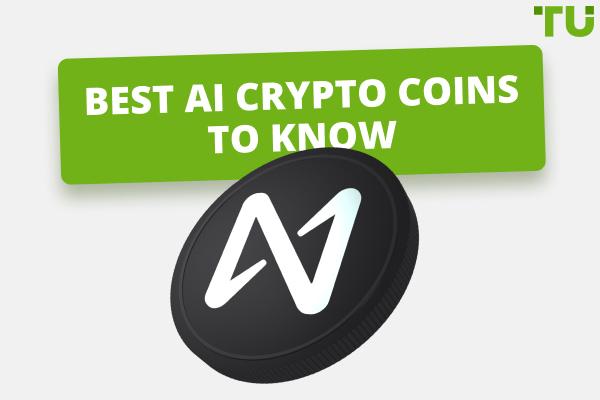8 Ways To Start Mining Bitcoins At Home
We've covered the pros and cons of 8 ways to mine bitcoins at home:
-
GPU: Ideal for versatile cryptocurrency mining, balancing power and efficiency across multiple currencies
-
CPU: Suited for mining less resource-intensive cryptocurrencies; entry-level mining option
-
Cloud Mining: Allows mining without owning hardware; convenient, but higher fees and scam risks
-
ASIC: Specialized for Bitcoin mining; offers the highest efficiency for specific cryptocurrencies
-
Mining Rigs: Customizable setups using GPUs or ASICs for scalable mining operations
-
Software: Coordinates hardware with blockchain; necessary for all mining types, varies by hardware
-
Bitcoin Mining Pools: Combines resources for higher success rates; rewards shared among participants
-
FPGA: Offers a balance between flexibility of GPUs and efficiency of ASICs; reprogrammable for different algorithms
As the digital age progresses, the practice of mining Bitcoin from home has emerged as a potential investment opportunity. This intriguing venture, while seemingly lucrative, is not without its complexities. It demands an understanding of electricity costs, the efficiency of mining equipment, and optimal location considerations.
Additionally, the evolving nature of this field requires constant updating of knowledge and adapting to technological advancements. The forthcoming discussion will provide insight into seven essential strategies for initiating home-based Bitcoin mining, offering a guide to maneuver through its intricate landscape.
-
What is Bitcoin Mining?
Bitcoin mining is the process of verifying and adding transaction records to Bitcoin's public ledger (blockchain) by solving complex cryptographic challenges. This process secures the network and rewards miners with new bitcoins and transaction fees.
-
Can you still mine Bitcoin at home?
Yes, you can still mine Bitcoin at home using specialized hardware like ASICs or GPUs. However, the profitability depends on the cost of electricity and the efficiency of your mining setup.
-
Is bitcoin mining legal?
Bitcoin mining's legality depends on your country's laws. In many countries, it is legal, but some have banned or restricted cryptocurrency-related activities, including mining.
-
How much does it cost to mine bitcoin?
The cost to mine a bitcoin varies widely, depending on electricity rates, mining efficiency, and the specific mining hardware used. It can range from a few hundred to several thousand dollars.
The basics of Bitcoin mining
In the ecosystem of Bitcoin, miners are pivotal, ensuring the network's security and processing transactions. They validate and record transactions on the blockchain, a decentralized ledger, using substantial computational power and energy.

How bitcoin mining works at home
Miners are rewarded with newly minted Bitcoin and transaction fees for the blocks they verify, incentivizing their contribution to the network's integrity. Miners can operate solo, attempting to solve blocks independently for the full reward, or join mining pools to combine resources, increasing their chances of success and receiving a share of rewards based on their contributed power.
While solo mining offers the potential for larger payouts, it's significantly more unpredictable and resource-intensive. Pool mining, conversely, provides more consistent but smaller rewards, making it a preferred choice for many, especially those with limited hardware.
This dual approach to mining ensures the continuous validation and security of Bitcoin transactions, maintaining the network's functionality and trustworthiness.
How does Bitcoin mining work?
Bitcoin mining, at its core, involves miners using high-powered computers to solve complex mathematical puzzles, a process critical for adding new blocks to the blockchain. This task, central to the operation and security of the network, ensures the validity of transactions, prevents double-spending, and maintains the blockchain’s integrity.
Upon successfully solving these puzzles, miners add a new block to the chain. This achievement, termed “mining”, is rewarded with newly minted Bitcoins and transaction fees. As such, miners are incentivized to compete, each striving to be the first to solve the puzzle.
This competition and the ensuing consensus on the order of transactions ensure the creation of new Bitcoins in a decentralized manner, maintaining the system’s fairness and security.
Best crypto exchanges
How to start mining Bitcoin at home?
To successfully mine Bitcoin at home, understanding the pros and cons of different mining methods is crucial. These various methods include:
-
GPU Mining: Uses graphics processing units to efficiently solve cryptographic puzzles. Ideal for versatile cryptocurrency mining, balancing power consumption and computational capability.
-
CPU Mining: Employs the computer's central processing unit for mining. Best for less competitive coins, given its lower speed and efficiency compared to other methods.
-
Cloud Mining: Rent mining power from providers without managing hardware. Suitable for beginners wanting to mine without hardware investment, but risks depend on the provider's reliability.
-
ASIC Mining: Utilizes specialized chips designed solely for mining Bitcoin, offering high efficiency and power. Best for serious miners focused on Bitcoin, requiring significant investment.
-
Mining Rigs: Custom-built computers designed for mining, equipped with multiple GPUs or ASICs. Offers scalability and flexibility for enthusiasts with space for equipment and cooling.
-
Software: Essential for connecting mining hardware to the blockchain, controlling hardware operations. Necessary for all miners, with different software catering to various hardware types and mining preferences
-
FPGA Mining: Field-Programmable Gate Array devices are reprogrammable for specific mining algorithms, offering a balance between GPU flexibility and ASIC efficiency. Best for miners seeking adaptability and efficiency.
-
Bitcoin Mining Pools: Collaborative mining where individuals join resources to increase their chances of earning mining rewards. Ideal for miners looking to contribute smaller computational power and share profits, reducing the volatility of solo mining rewards.
Each method offers a different balance of investment, efficiency, and potential profitability, catering to a wide range of miners from hobbyists to serious investors. Let’s explore these methods in detail to make an informed decision on the most suitable approach for home-based Bitcoin mining.
Can I mine Bitcoin with a graphics card?
Utilizing a graphics card for Bitcoin mining, or GPU mining, taps into the processing power of graphics cards to solve complex mathematical challenges, crucial for verifying transactions on the Bitcoin network.
This approach presents both benefits and challenges:
👍 Pros
• Lower initial investment cost than ASIC miners.
• Ability to mine a variety of cryptocurrencies, enhancing flexibility.
👎 Cons
• Less efficient, with higher electricity costs and lower hash rates.
• Profitability decreases over time due to increased mining difficulty.
GPU mining is particularly suited for beginners and those interested in mining various cryptocurrencies, offering a more accessible entry point compared to the hefty investment required for ASIC mining.
Required for starting are a potent graphics card, effective mining software, a secure Bitcoin wallet, and a reliable power supply. Adequate cooling is also essential to preserve the hardware.
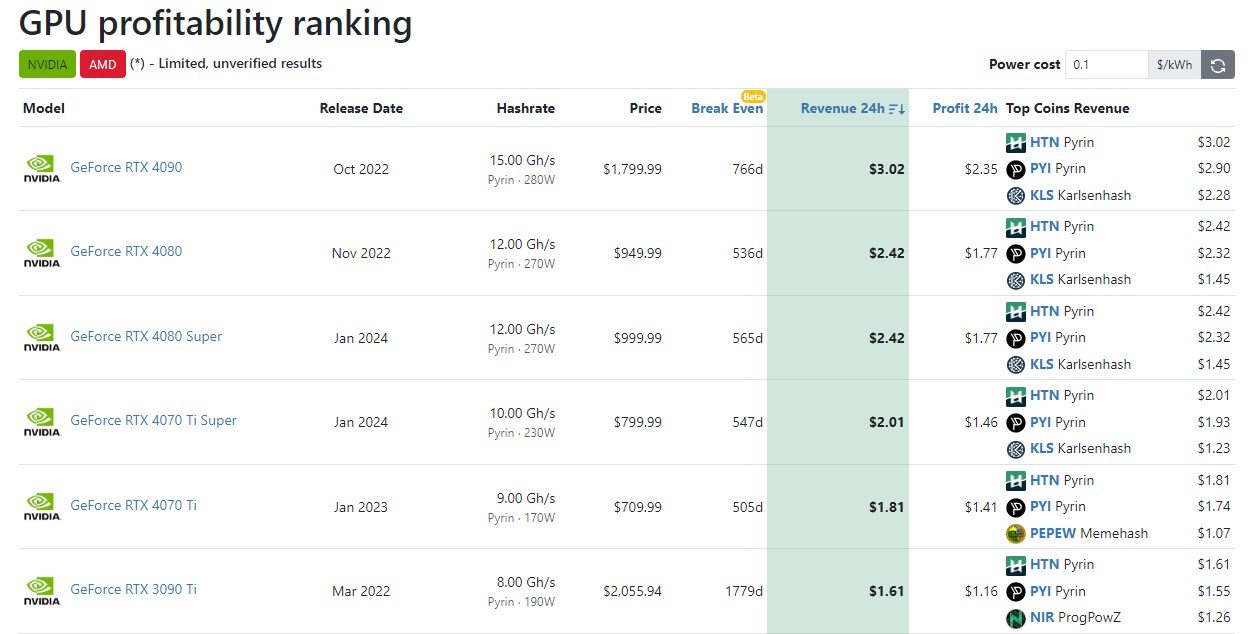
Nvidia dominates the ranking of the best video cards for mining bitcoin at home
Despite the higher operational costs and initial setup challenges, GPU mining remains an attractive option for individuals exploring the expansive realm of cryptocurrency mining. Its versatility in mining different cryptocurrencies provides a strategic edge, mitigating risks associated with the volatility of focusing on a single cryptocurrency.
Can I mine Bitcoin with a CPU?
While it’s technically possible to mine Bitcoin using a CPU, this method is generally considered inefficient and less profitable due to the CPU’s low processing power and hash rate, especially when compared to ASIC miners or GPU rigs. Mining Bitcoin with a CPU lacks the specialized hardware that ASIC miners provide, which limits its profitability.
-
CPUs offer a low hash rate, making it difficult to compete with powerful mining rigs.
-
CPU mining is energy-inefficient, consuming more power for less output.
-
The slow mining speed of CPUs is not cost-effective in the competitive mining environment.
-
CPU mining lacks the ability to optimize for specific mining algorithms.
For efficient home Bitcoin mining, an investment in ASIC miners or GPU rigs is advisable, offering higher profitability and efficiency.
Another tip is to mine at home not Bitcoin, but other crypto coins that give more profit.
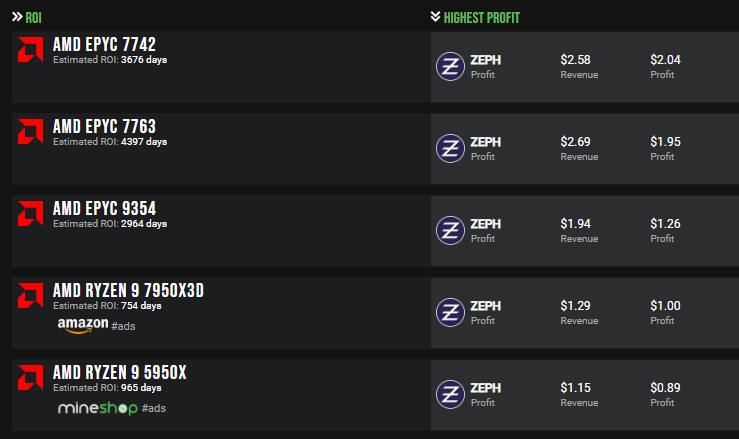
CPU mining rating
Crypto mining calculators show that you can earn more than $1 a day with AMD processors
Can I mine Bitcoin on cloud?
Cloud mining allows Bitcoin enthusiasts to engage in mining without the hefty investment in expensive, maintenance-heavy hardware. This method involves renting computational power from remote data centers, offering a hands-off approach to mining with several key considerations:
👍 Pros
• Lower upfront costs compared to traditional mining setups.
• No maintenance or electricity concerns.
• Accessible for beginners and those unable to invest in physical hardware.
👎 Cons
• Potential for higher operational fees cutting into profits.
• Risks of scams from less reputable providers.
• Limited control over mining operations and strategies.
To start cloud mining, selecting a trustworthy provider and choosing an appropriate mining plan are crucial steps. Despite the risks and costs, cloud mining presents a feasible option for individuals seeking a simpler entry point into Bitcoin mining, democratizing access to the mining process.
Are ASIC miners worth it?
Contemplating the potential of ASIC miners in the realm of Bitcoin mining requires a deep understanding of their operational mechanisms and investment worth.
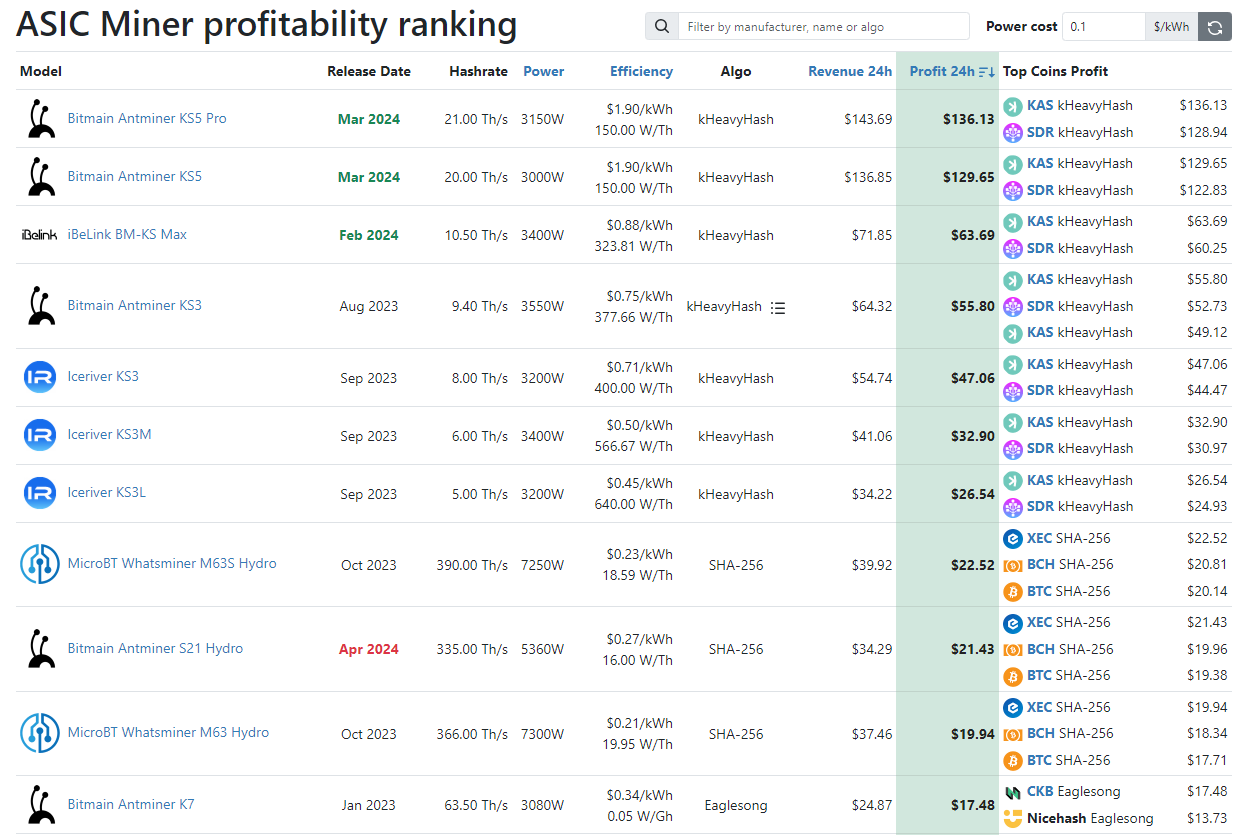
ASIC miners rating
ASIC miners, specifically designed for Bitcoin mining, offer high hash rates and low power consumption, making them a popular choice for home miners. However, they come with their challenges.
High initial investment is needed for ASIC miners. They offer limited resale value due to their specificity to Bitcoin mining. Centralization risk with large mining operations possessing multiple ASIC miners. Faster mining speeds and lower energy costs compared to other mining hardware. The necessity of calculating profitability based on electricity costs and market conditions.
Is Bitcoin mining rig profitable?
Shifting our focus from the intricacies of ASIC miners, let’s explore the profitability and operational dynamics of a Bitcoin mining rig and how one might initiate such a venture at home.
Mining rig is a purpose-built computer designed to mine cryptocurrencies. Such rigs are usually equipped with multiple graphics processing units (GPUs) or, less commonly, ASIC chips optimized for the cryptographic tasks that underlie the mining process.
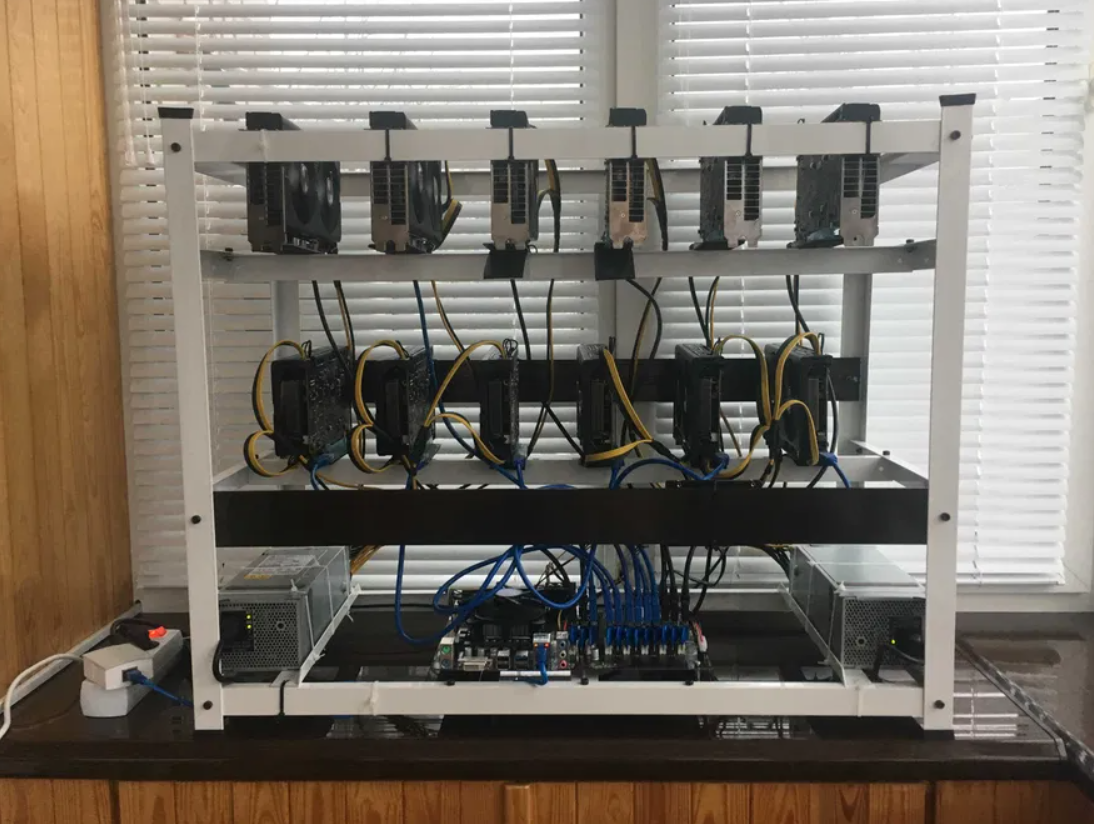
Example of bitcoin mining rig for home
The venture, though potentially profitable, poses challenges like high operational costs and competition.
Here’s a brief overview:
| Pros | Cons |
|---|---|
|
Earning Bitcoin rewards |
High electricity costs |
|
Participation in the network |
Expensive equipment |
|
Potential profit |
Intense competition |
Understanding these factors is crucial before setting up a home Bitcoin mining rig, as it requires significant investment and continuous monitoring.
Can I mine Bitcoin using software?
Mining Bitcoin with software taps into your computer's processing power to solve cryptographic puzzles, crucial for verifying blockchain transactions. It's a method marked by its accessibility and relatively low initial investment, compared to the high costs of ASIC devices.
Key aspects include:
-
Ease of Setup: User-friendly for beginners, requiring minimal technical knowledge to get started.
-
Cost Efficiency: Avoids the hefty upfront investment in specialized hardware, suitable for those on a tight budget.
-
Hardware Flexibility: Allows for the use of various hardware types, offering versatility in mining operations.
However, it's important to consider the limitations:
-
Lower Efficiency: Software mining can't match the performance of dedicated mining hardware, impacting profitability.
-
Increased Difficulty: The growing complexity of Bitcoin mining algorithms makes software mining less effective over time.
-
Hardware Wear: Extensive mining may accelerate hardware degradation.
While software mining offers an entry point into the Bitcoin mining world with lower barriers, it also comes with challenges like reduced efficiency and potential hardware issues.
How do I join a Bitcoin mining pool?
To effectively mine Bitcoin at home, one viable strategy involves joining a Bitcoin mining pool, where collective computational power increases the likelihood of earning rewards.
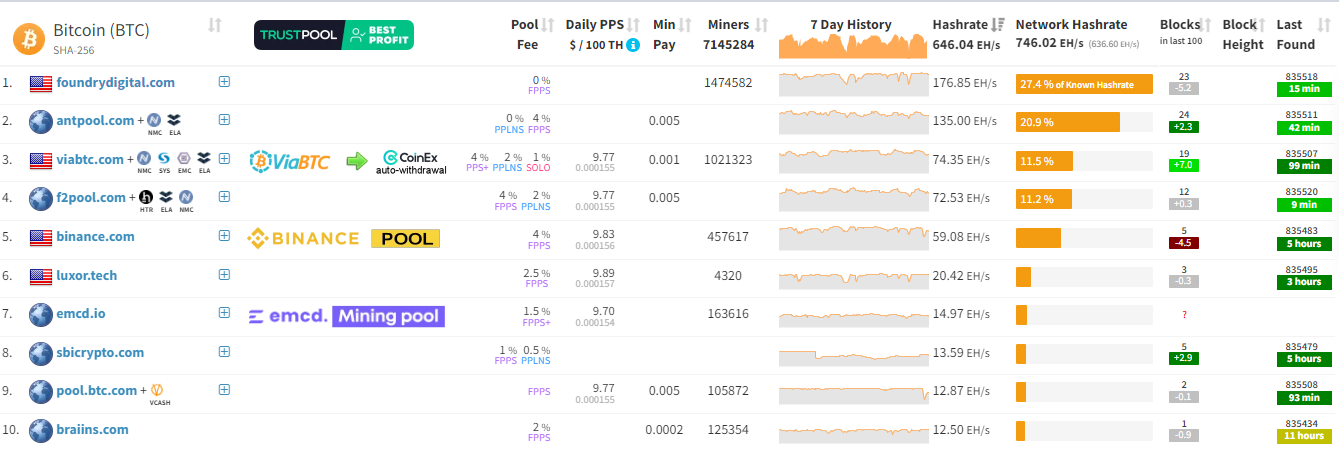
World's largest bitcoin mining pools
Bitcoin mining pools amalgamate the resources of multiple miners, distributing the rewards based on each participant’s contribution to solving a block. This provides a more consistent payout, reducing the reward variance typically associated with solo mining.
Nevertheless, there are potential downsides to consider. Sharing the rewards and possible pool fees can diminish your profits, and you’re reliant on the pool operator’s integrity. Despite the drawbacks, Bitcoin mining pools can be an excellent option for beginners or small-scale miners seeking to enhance their chances of earning Bitcoin rewards.
FPGA (Field-Programmable Gate Array) Mining
In the quest for enhanced efficiency in Bitcoin mining at home, the use of FPGA (Field-Programmable Gate Array) mining emerges as a promising strategy due to its reprogrammable nature and superior performance metrics. FPGA mining leverages customizable hardware, offering higher efficiency than traditional CPUs and GPUs, and a degree of flexibility unmatched by other mining technologies.
-
FPGA can be reprogrammed to mine different cryptocurrencies, enhancing adaptability.
-
It offers lower power consumption, increasing profitability.
-
FPGA provides higher hash rates, enhancing mining efficiency.
The initial investment for FPGA mining can be higher than other methods. Optimal FPGA usage requires a level of technical expertise not needed for other mining technologies.
Through FPGA mining, home miners can significantly improve their mining operations’ efficiency and profitability.
Is it worth it to mine Bitcoin at home in 2024?
Given the complexity and ever-evolving nature of Bitcoin mining, assessing its profitability at home in 2024 necessitates careful analysis of several key factors such as:
-
Halving
-
Market cycles
-
Initial investment
-
Power consumption and electricity bills
-
Ecological impact
The process of Bitcoin halving, which occurs approximately every four years, can significantly influence profitability. This event reduces the number of new Bitcoins created and earned by miners by half, thereby increasing the competition among miners.
The state of the market cycle at the time of mining could also affect profitability. During bullish periods, even with higher operational costs, mining might be profitable due to the increased value of Bitcoin. However, during bearish trends, the lower price of Bitcoin could make mining unprofitable. For further insights, read our article Bitcoin Price Prediction 2024, 2025, 2030 - Will BTC Go Up?
The initial investment on hardware, especially on high-efficient ASICs, and the recurring power consumption and electricity bills constitute a significant part of the mining cost. In areas where electricity is expensive, Bitcoin mining at home could be less viable.
Lastly, the ecological impact of Bitcoin mining is a growing concern. More energy-efficient mining practices and renewable energy sources are becoming increasingly relevant in the decision-making process of potential miners.
Is Bitcoin mining at home risky?
While assessing the viability of Bitcoin mining at home in 2024, it becomes equally important to acknowledge the inherent risks associated with this venture. It is crucial to understand that Bitcoin mining at home is not just about acquiring the right hardware and setting it up. There are multiple factors that contribute to the risks involved in this process.
Here are some key risk factors associated with Bitcoin mining at home:
-
High electricity costs: Mining Bitcoin requires substantial energy, which can lead to elevated utility bills.
-
Equipment expenses: The initial investment in high-performance mining hardware is significant.
-
Hardware failures: Overheating and constant operation can lead to hardware failures, requiring replacements or costly repairs.
-
Market volatility: The fluctuating value of Bitcoin can impact the profitability of mining operations.
-
Security threats: Mining involves potential exposure to hacking attempts and security vulnerabilities.
Warning, cryptojacking!
Cryptojacking is the theft of computing power of servers, computers, smartphones for the purpose of hidden cryptocurrency mining. Using virus-infected home crypto farm equipment, hackers connect to the mining process and will use your CPUs and GPUs at no significant cost. Infection and unauthorized access occurs through any software that is poorly protected against virus attacks.
Methods to combat cryptojacking:
-
mandatory use of serious antivirus systems;
-
constant monitoring of equipment performance:
-
network monitoring for non-standard outgoing web traffic;
-
use of traffic control tools - firewalls and intrusion detection systems.
Is Bitcoin mining at home allowed?
Navigating the legality of Bitcoin mining at home is generally permissible, subject to local regulations and electricity guidelines. Rules vary by jurisdiction, so thorough research into specific laws is crucial.
Some countries may have restrictions or legislation on home-based mining, making clarity essential.
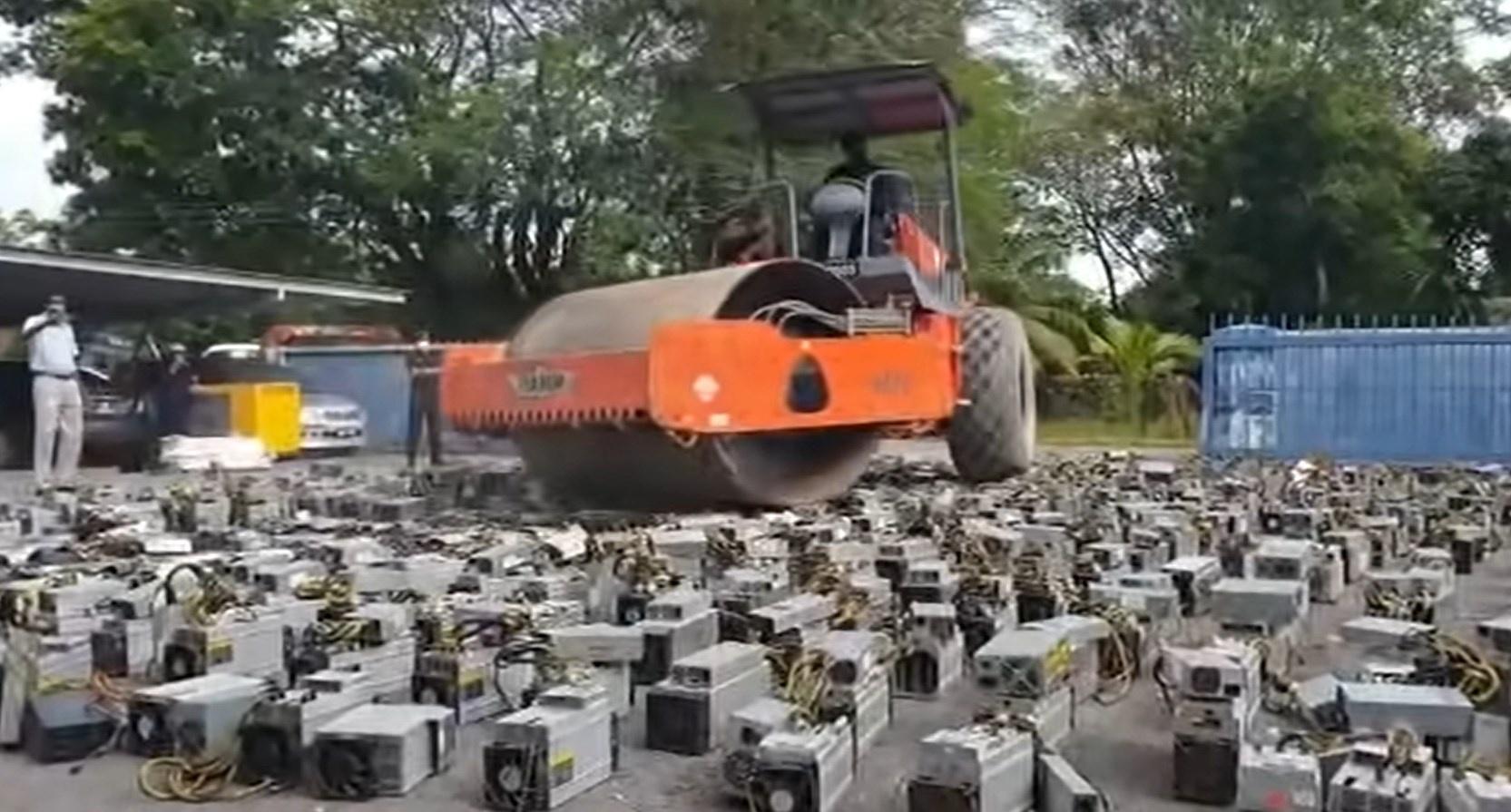
Police in Malaysia destroy equipment of illegal miners who caused forest fires
Bitcoin mining at home can be cost-effective in regions with lower electricity costs. However, a comprehensive cost-benefit analysis is necessary considering upfront hardware costs, ongoing electricity expenses, and potential returns.
Maintaining hardware for efficient mining, including ventilation and technical check-ups, is essential for profitability. While generally allowed, home mining has challenges and prerequisites that require careful planning.
How do I become a successful Bitcoin miner?
To embark on the journey of becoming a successful Bitcoin miner at home, it is paramount to invest in specialized mining hardware such as ASIC miners, which are known for their efficiency in Bitcoin mining at home. ASIC miners, with their high processing power, are specifically designed to solve Bitcoin blocks.
According to a bitcoin expert on the TradersUnion team, Tobi Opeyeme: Hardware is just a part of the equation. To truly succeed, a miner must understand the dynamic nature of Bitcoin mining and be prepared to adapt to market changes.
Here are some critical steps to consider:
-
Join a mining pool: Mining alone is challenging. Pools combine resources of individual miners to solve blocks faster and split the rewards.
-
Manage power consumption: High electricity costs can eat into profits. Efficient power use is crucial.
-
Monitor your hardware’s performance: Regularly check if your ASIC miner is operating at peak efficiency.
-
Keep up with trends: Stay updated with Bitcoin mining trends and market conditions.
-
Prioritize security: Implement robust security measures to protect your mining setup from cyber threats.
Conclusion
To sum up, home-based Bitcoin mining presents a potentially lucrative venture, albeit requiring careful planning, substantial investment, and decent amounts of technical knowledge. Despite risks, its viability rests upon strategic optimization of resources, adherence to safety protocols, and keen adaptation to technological advancements.
An informed, tech-savvy approach thus remains key to successfully navigate this complex yet rewarding domain. The future of Bitcoin mining at home, while challenging, holds promise for those willing to adapt and evolve, especially considering that 2024 is looking like a good year for crypto.
Team that worked on the article
Vuk stands at the forefront of financial journalism, blending over six years of crypto investing experience with profound insights gained from navigating two bull/bear cycles. A dedicated content writer, Vuk has contributed to a myriad of publications and projects. His journey from an English language graduate to a sought-after voice in finance reflects his passion for demystifying complex financial concepts, making him a helpful guide for both newcomers and seasoned investors.
Dr. BJ Johnson is a PhD in English Language and an editor with over 15 years of experience. He earned his degree in English Language in the U.S and the UK. In 2020, Dr. Johnson joined the Traders Union team. Since then, he has created over 100 exclusive articles and edited over 300 articles of other authors.
Mirjan Hipolito is a journalist and news editor at Traders Union. She is an expert crypto writer with five years of experience in the financial markets. Her specialties are daily market news, price predictions, and Initial Coin Offerings (ICO).






